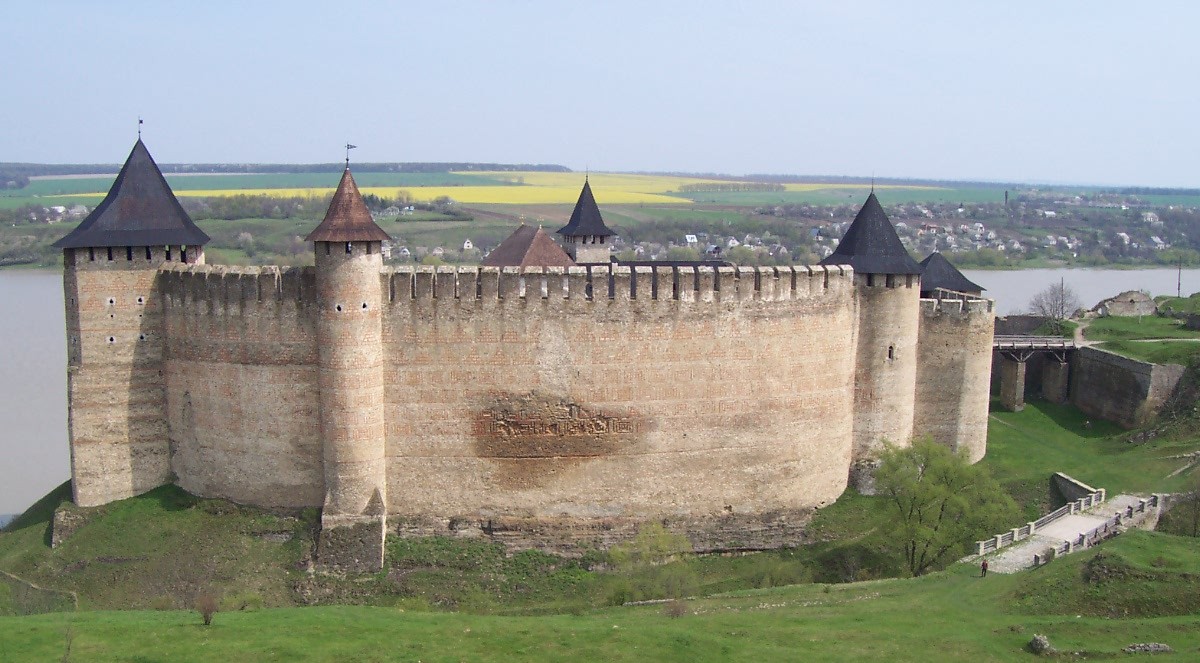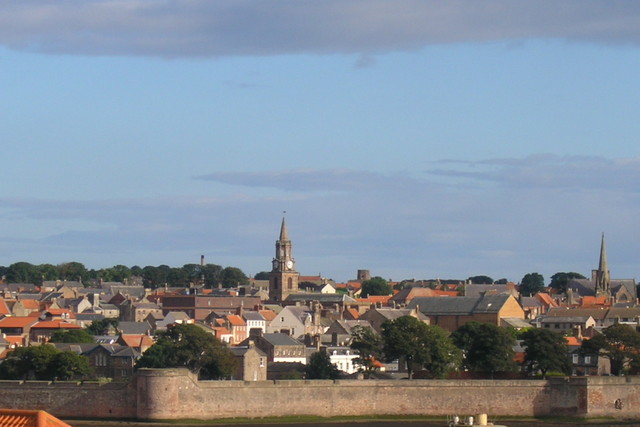|
ChĂąteau De Domeyrat
The ChĂąteau de Domeyrat is a castle of Auvergne (province), Auvergne. It is located in the Communes of France, commune of Domeyrat, in the Haute-Loire department of central France. It has been listed since 1983 as a ''monument historique'' by the French Ministry of Culture. History A first mention of the castle was in the inventory of Alphonse de Poitiers' vassals, done between 1250 and 1260. It was then a property of the Papabeuf family. The lineage seems to have been extinct in 1348, probably due to the Bubonic plague, plague; the castle went from hand to hand and may have been abandoned during the Hundred Years' War. Adhemar de Jori (de Jory), was the Lord of Domeyrat in 1375. In 1387 the new lord of Domeyrat was Pons de Langheac, seneschal of Auvergne. His son inherited the title in 1421. He has deeply restructured the castle and is considered as the second builder, hence there are different opinions about the date of construction. The de Langheac family kept the castle u ... [...More Info...] [...Related Items...] OR: [Wikipedia] [Google] [Baidu] |
General Councils (France)
The departmental councils ( ; singular, ''conseil dĂ©partemental'' ) of France are representative assemblies elected by universal suffrage in 98 of the country's 101 departments. Prior to the 2015 French departmental elections they were known as general councils (''conseils gĂ©nĂ©raux''; singular, ''conseil gĂ©nĂ©ral''). History The Law of 22 December 1789 required the establishment of an assembly in each department, known as the council of the department. This law was repealed on 4 December 1793; it was restored as the "law on the division of the territory of the Republic and its administration" on 17 February 1800, in which, "General Council of the departments" were formed. At this time, the name "General Council" was also used by town and district councils. The members of the general council were not elected until 1833; they were first elected by universal manhood suffrage on 3 July 1848. The first female president of a department council was Ăvelyne Baylet in Tarn-et-G ... [...More Info...] [...Related Items...] OR: [Wikipedia] [Google] [Baidu] |
Monuments Historiques Of Haute-Loire
A monument is a type of structure that was explicitly created to commemorate a person or event, or which has become relevant to a social group as a part of their remembrance of historic times or cultural heritage, due to its artistic, historical, political, technical or architectural importance. Examples of monuments include statues, (war) memorials, historical buildings, archaeological sites, and cultural assets. If there is a public interest in its preservation, a monument can for example be listed as a UNESCO World Heritage Site. The '' Palgrave Encyclopedia of Cultural Heritage and Conflict'' gives the next definition of monument:Monuments result from social practices of construction or conservation of material artifacts through which the ideology of their promoters is manifested. The concept of the modern monument emerged with the development of capital and the nation-state in the fifteenth century when the ruling classes began to build and conserve what were termed monument ... [...More Info...] [...Related Items...] OR: [Wikipedia] [Google] [Baidu] |
Castles In Auvergne-RhĂŽne-Alpes
A castle is a type of fortification, fortified structure built during the Middle Ages predominantly by the nobility or royalty and by Military order (monastic society), military orders. Scholars usually consider a ''castle'' to be the private fortified house, fortified residence of a lord or noble. This is distinct from a mansion, palace, and villa, whose main purpose was exclusively for ''pleasance'' and are not primarily fortresses but may be fortified. Use of the term has varied over time and, sometimes, has also been applied to structures such as hill forts and 19th- and 20th-century homes built to resemble castles. Over the Middle Ages, when genuine castles were built, they took on a great many forms with many different features, although some, such as curtain wall (fortification), curtain walls, arrowslits, and portcullises, were commonplace. European-style castles originated in the 9th and 10th centuries after the fall of the Carolingian Empire, which resulted ... [...More Info...] [...Related Items...] OR: [Wikipedia] [Google] [Baidu] |
List Of Castles In France
This is a list of castles in France, arranged by Regions of France, region and Departments of France, department. ;Notes: # The French word ''chĂąteau'' has a wider meaning than the English ''castle'': it includes architectural entities that are properly called palaces, mansions or vineyards in English. This list focuses primarily on architectural entities that may be properly termed ''castle'' or ''fortress'' (), and excludes entities not built around a substantial older castle that is still evident. # Occasionally, where there is not a specific article on a castle, links are given to another article that includes details, typically an article on a town. # ''Italics'' indicate links to articles in the :fr:Main Page, French Wikipedia. # If no article appears in either English or French Wikipedias, a link is given to an external website. # The number in parentheses after the name of each department indicates the department number used for administrative purposes. # The number of cast ... [...More Info...] [...Related Items...] OR: [Wikipedia] [Google] [Baidu] |
Enceinte
Enceinte (from Latin ''incinctus'' "girdled, surrounded") is a French term that refers to the "main defensive enclosure of a fortification". For a castle, this is the main defensive line of wall towers and curtain walls enclosing the position. For a settlement, it would refer to the main town wall with its associated gatehouses, towers, and walls. According to the 1911 ''EncyclopĂŠdia Britannica'', the term was strictly applied to the continuous line of bastions and curtain walls forming "the body of the place", this last expression being often used as synonymous with ''enceinte''. However, the outworks or defensive wall close to the enceinte were not considered as forming part of it. In early 20th-century fortification, the enceinte was usually simply the ''innermost'' continuous line of fortifications. In architecture, generally, an enceinte is the close or precinct of a cathedral, abbey, castle, etc. This definition of the term differs from the more common use of ''en ... [...More Info...] [...Related Items...] OR: [Wikipedia] [Google] [Baidu] |
Keep
A keep is a type of fortified tower built within castles during the Middle Ages by European nobility. Scholars have debated the scope of the word ''keep'', but usually consider it to refer to large towers in castles that were fortified residences, used as a refuge of last resort should the rest of the castle fall to an adversary. The first keeps were made of timber and formed a key part of the motte-and-bailey castles that emerged in Normandy and Anjou during the 10th century; the design spread to England, Portugal, south Italy and Sicily. As a result of the Norman Conquest of England in 1066, use spread into Wales during the second half of the 11th century and into Ireland in the 1170s. The Anglo-Normans and French rulers began to build stone keeps during the 10th and 11th centuries, including Norman keeps, with a square or rectangular design, and circular shell keeps. Stone keeps carried considerable political as well as military importance and could take a decade or more t ... [...More Info...] [...Related Items...] OR: [Wikipedia] [Google] [Baidu] |
Castle Walls
A curtain wall is a defensive wall between fortified towers or bastions of a castle, fortress, or town. Ancient fortifications Evidence for curtain walls or a series of walls surrounding a town or fortress can be found in the historical sources from Assyria and Egypt. Some notable examples are ancient Tel Lachish in Israel and Buhen in Egypt. Curtain walls were built across Europe during the Roman Empire; the early 5th century Theodosian Walls of Constantinople influenced the builders of medieval castles many centuries later. Curtain wall castles In medieval castles, the area surrounded by a curtain wall, with or without towers, is known as the bailey. The outermost walls with their integrated bastions and wall towers together make up the enceinte or main defensive line enclosing the site. In medieval designs of castle and town, the curtain walls were often built to a considerable height and were fronted by a ditch or moat to make assault difficult. Walls were topped w ... [...More Info...] [...Related Items...] OR: [Wikipedia] [Google] [Baidu] |
Senouire
The Senouire (; ) is a long river in the Haute-Loire'' département'', south-central France. Its source is at Sembadel. It flows generally west. It is a right tributary of the Allier Allier ( , , ; ) is a Departments of France, department in the Auvergne-RhÎne-Alpes Regions of France, region that borders Cher (department), Cher to the west, NiÚvre to the north, SaÎne-et-Loire and Loire (department), Loire to the east, Pu ... into which it flows between Fontannes and Vieille-Brioude, near Brioude. Communes along its course This list is ordered from source to mouth: Sembadel, Bonneval, La Chaise-Dieu, MalviÚres, La Chapelle-Geneste, Connangles, Saint-Pal-de-Senouire, La Chapelle-Bertin, Collat, Josat, Sainte-Marguerite, Mazerat-Aurouze, Paulhaguet, Salzuit, Domeyrat, FrugiÚres-le-Pin, Lavaudieu, Fontannes, Vieille-Brioude References Rivers of France Rivers of Haute-Loire Rivers of Auvergne-RhÎne-Alpes {{France-river-stub ... [...More Info...] [...Related Items...] OR: [Wikipedia] [Google] [Baidu] |
Middle Ages
In the history of Europe, the Middle Ages or medieval period lasted approximately from the 5th to the late 15th centuries, similarly to the post-classical period of global history. It began with the fall of the Western Roman Empire and transitioned into the Renaissance and the Age of Discovery. The Middle Ages is the middle period of the three traditional divisions of Western history: classical antiquity, the medieval period, and the modern period. The medieval period is itself subdivided into the Early, High, and Late Middle Ages. Population decline, counterurbanisation, the collapse of centralised authority, invasions, and mass migrations of tribes, which had begun in late antiquity, continued into the Early Middle Ages. The large-scale movements of the Migration Period, including various Germanic peoples, formed new kingdoms in what remained of the Western Roman Empire. In the 7th century, North Africa and the Middle Eastâonce part of the Byzantine Empireâ ... [...More Info...] [...Related Items...] OR: [Wikipedia] [Google] [Baidu] |





